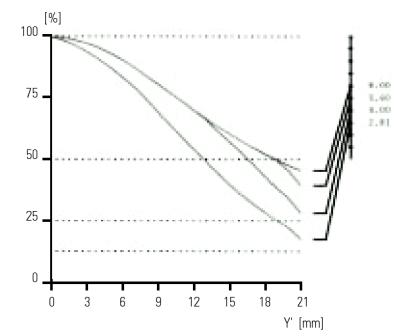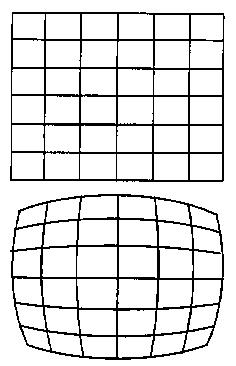
Closing down the lens 3 stops reduces the light loss to one stop (upper curve)
This diagram is from a newly, excellent (Retrofocus type) designed 21mm lens. This form of, in everyday speech "vignetting" is unevitable, and occurs even in the best designed wide angle lenses. If it would be vignetting it could be avoid in one or another way, probably by the lens designer.
But the only thing one can do against it belongs to the photographer: Either avoid very wideangle lenses, stop down at least two stops, change background, or use tolerant film (i.e. B&W negative)

